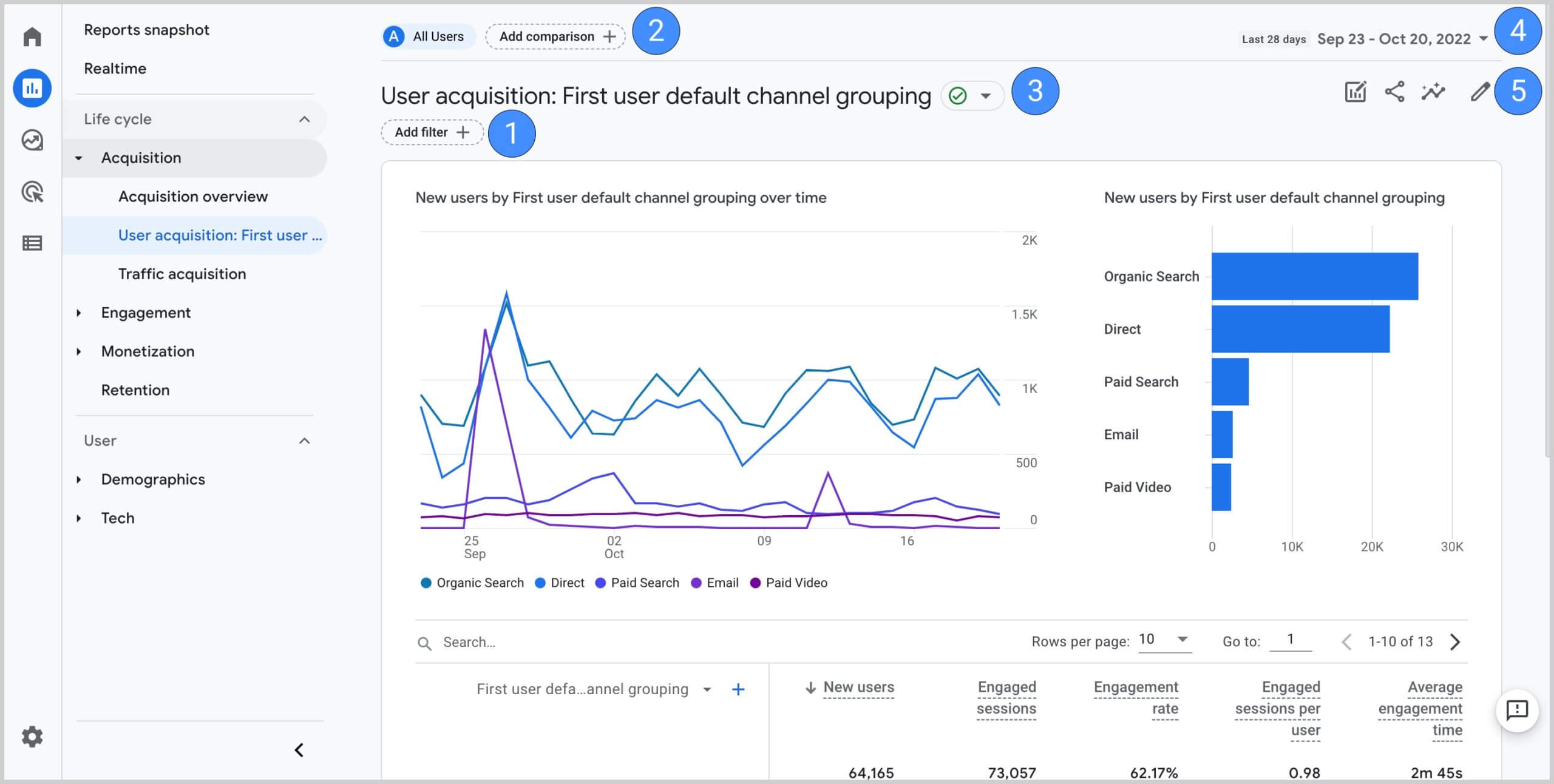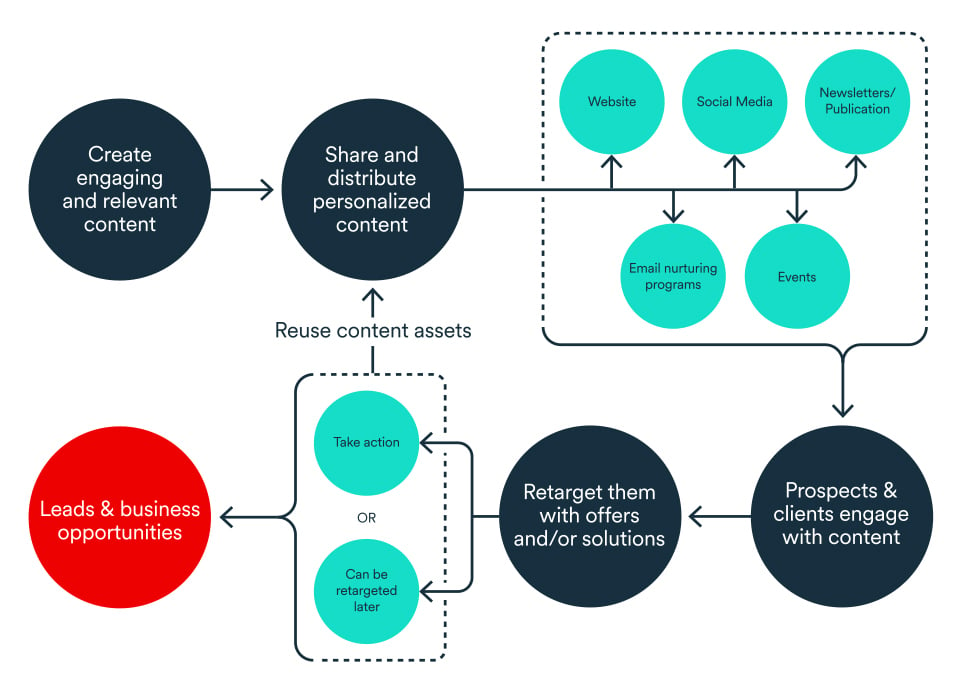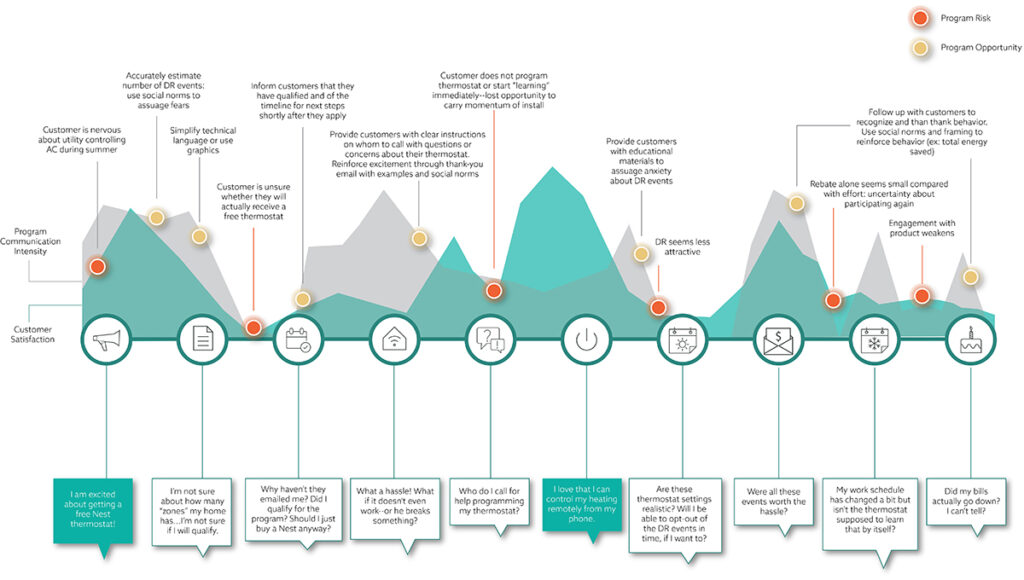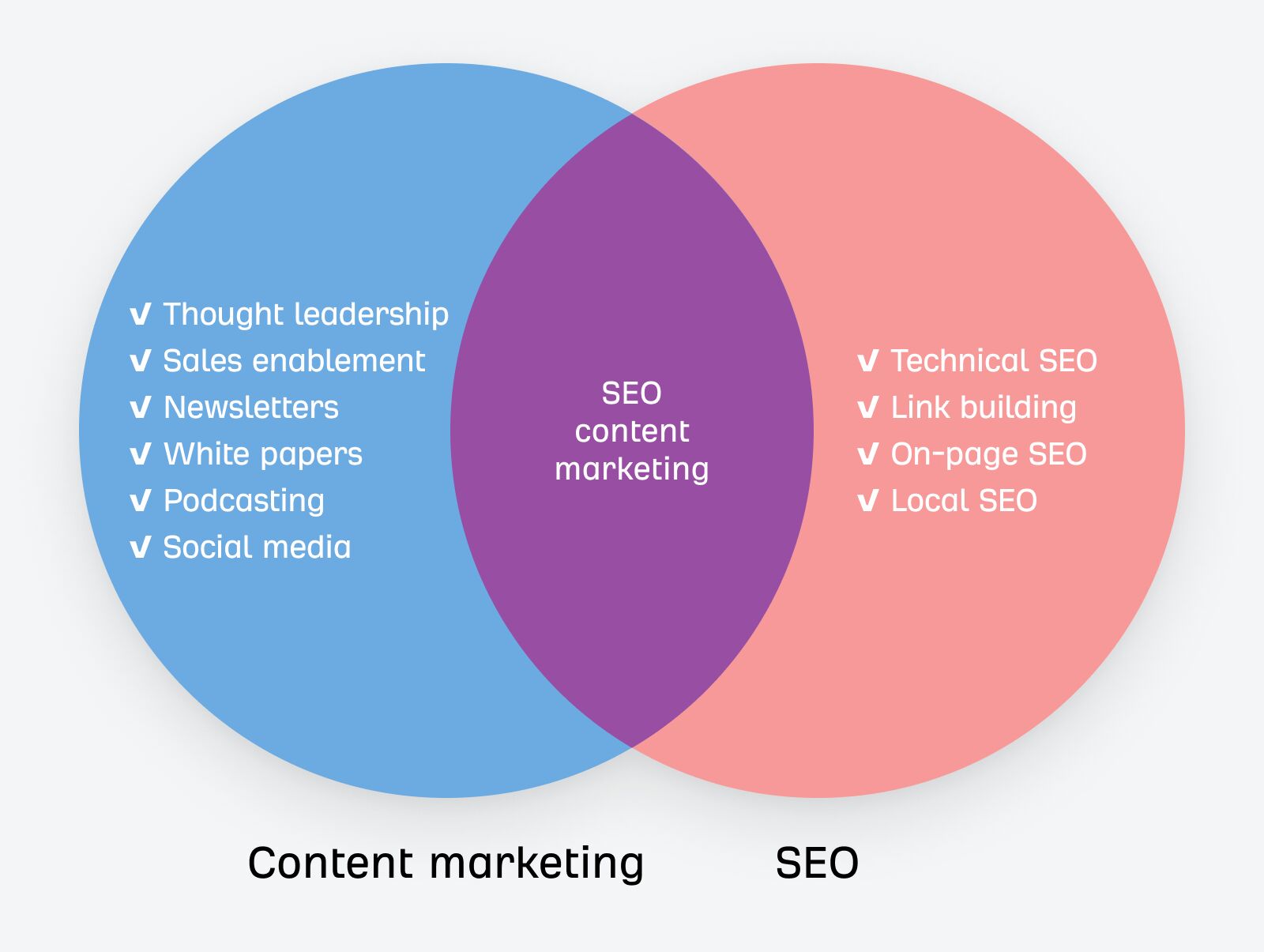
Published: Nov 30, 2024
Why Your Small Business Needs a Content Strategy (Like, Yesterday)
Why Your Small Business Needs a Content Strategy (Like, Yesterday)
I’ve seen more small businesses crash and burn from bad content than I’ve had hot dinners. Trust me, I’m not just blowing smoke up your… marketing funnel. As someone who’s been in the trenches of content marketing for over a decade, I’ve got the battle scars (and the success stories) to prove it. So, buckle up, buttercup – we’re about to dive into why your small business needs a content strategy, and why it needed one yesterday.
TLDR: What exactly is a content strategy, and why does my small business need one?
1️⃣ What is a content strategy?
A content strategy is your game plan for creating, publishing, and managing content that aligns with your business goals. It’s like a roadmap for your content, ensuring everything you put out there serves a purpose and moves you closer to your objectives.
2️⃣ Why is a content strategy crucial for small businesses?
A solid content strategy helps you stand out in a crowded market, build trust with your audience, and drive more traffic to your business. It’s not just about pumping out blog posts – it’s about creating targeted, valuable content that resonates with your audience and supports your business goals.
3️⃣ How can a content strategy benefit my small business?
A well-executed content strategy can boost your online visibility, establish your brand as an industry authority, generate more leads, and ultimately drive sales. It’s like having a 24/7 salesperson who never sleeps and always says the right thing.
Table of Contents
- The Perks of Having a Killer Content Strategy
- Boost Your Brand Like a Boss
- SEO Superpowers Activated
- Turn Visitors into Raving Fans
- Supercharge Your Social Media Game
- Lead Generation on Autopilot
- Cost-Effective Marketing That Packs a Punch
- Establish Your Expertise (Even If You’re the New Kid on the Block)
- The Gift That Keeps on Giving
- Adapt and Thrive in Any Market
- Common Content Strategy Pitfalls (And How to Dodge ‘Em)
- Measuring Your Content Strategy Success
- Website Traffic: More Than Just Numbers
- Engagement: Are You Starting Conversations?
- Lead Generation: Turning Readers into Customers
- SEO Performance: Climbing the Google Ladder
- Content ROI: Show Me the Money
- Customer Feedback: Straight from the Horse’s Mouth
- Competitive Analysis: Keeping Up with the Joneses
- Content Audit: Taking Stock of Your Arsenal
- The Hard Truth About Small Business Marketing
- What’s the Big Deal About Content Strategy?
- How to Craft Your Small Business Content Strategy
- Ready to Level Up Your Small Business Content Game?
The Perks of Having a Killer Content Strategy
Let’s get real for a second. You’re probably wondering, “Why should I bother with a content strategy when I’m already juggling a million things?” Well, buckle up, because I’m about to drop some truth bombs that’ll make you want to jump on the content strategy bandwagon faster than you can say “viral post.”
Boost Your Brand Like a Boss
First things first, a solid content strategy puts your brand on the map. It’s like giving your business a megaphone in a crowded room. When you consistently pump out quality content that speaks to your audience, you’re not just another faceless company – you become the go-to expert in your field.
Take Warby Parker, for example. These eyewear geniuses used content marketing to turn buying glasses into an experience. Their “Home Try-On” campaign, complete with fun social media challenges, didn’t just sell glasses; it created a community. That’s the power of strategic content, folks.
SEO Superpowers Activated
You know that feeling when you Google something and your competitor pops up first? Yeah, it sucks. But with a killer content strategy, you can flip the script. By consistently creating valuable, keyword-rich content, you’re basically giving Google a big ol’ bear hug. And trust me, Google loves hugs.
Here’s a neat trick: Use tools like Google Trends to find hot topics in your industry. Then, create content around those trends. It’s like catching a wave – ride it right, and you’ll surf straight to the top of search results.
Turn Visitors into Raving Fans
Great content is like a magnet for your ideal customers. But here’s the kicker – it doesn’t just attract them; it keeps them coming back for more. When you provide value through your content, you’re building relationships, not just selling stuff.
Remember Dollar Shave Club? Their hilarious videos didn’t just go viral; they created a loyal fanbase that was more than happy to subscribe to their razor delivery service. That’s the magic of content that resonates.
Supercharge Your Social Media Game
Social media without a content strategy is like a car without gas – you’re not going anywhere fast. With a solid plan, your social channels become powerhouses of engagement. You’re not just posting randomly; you’re crafting a narrative that your followers can’t resist.
Look at Wendy’s Twitter account. Their sassy comebacks and witty posts aren’t accidental – they’re part of a carefully crafted content strategy that’s turned their social media presence into a cultural phenomenon.
Lead Generation on Autopilot
Here’s where things get really exciting. A well-oiled content strategy doesn’t just attract eyeballs; it turns those eyeballs into leads. By creating targeted content that addresses your audience’s pain points, you’re setting up a lead generation machine that works 24/7.
HubSpot is the poster child for this approach. Their blog, ebooks, and free tools have turned them into an inbound marketing powerhouse. They don’t just talk about lead generation – they live it.
Cost-Effective Marketing That Packs a Punch
Let’s talk money. Traditional advertising is like setting your wallet on fire. Content marketing, on the other hand, is like investing in a savings account that keeps growing. According to the Content Marketing Institute, content marketing costs 62% less than traditional marketing and generates about 3 times as many leads.
Establish Your Expertise (Even If You’re the New Kid on the Block)
You don’t need a Ph.D. or 30 years of experience to be seen as an expert. With strategic content creation, you can position yourself as a thought leader in your niche faster than you can say “industry disruptor.”
Take Neil Patel, for instance. He built his digital marketing empire on the back of high-quality, actionable content. Now, he’s the guy everyone turns to for marketing advice.
The Gift That Keeps on Giving
Here’s the best part – unlike traditional ads that stop working the moment you stop paying, content keeps working for you long after you’ve created it. That blog post you wrote last year? It could still be driving traffic and leads today. It’s the marketing equivalent of compound interest.
Adapt and Thrive in Any Market
The business world changes faster than a chameleon on a disco floor. A content strategy gives you the flexibility to pivot quickly. When market trends shift, you can adjust your content to stay relevant and ahead of the curve.
Remember how quickly businesses had to adapt during the COVID-19 pandemic? Those with solid content strategies were able to quickly shift gears, providing valuable information and maintaining customer relationships even when physical doors were closed.
So there you have it, folks. A killer content strategy isn’t just nice to have – it’s essential for small businesses looking to make a big impact. It’s your ticket to standing out in a crowded market, building lasting relationships with customers, and growing your business without breaking the bank. Ready to get started? Your future self will thank you.
Common Content Strategy Pitfalls (And How to Dodge ‘Em)
Look, I get it. You’re excited to jump into content marketing and start seeing those sweet, sweet results. But hold your horses, cowboy. There are some common traps that can turn your content strategy from a goldmine into a dumpster fire. Let’s break ‘em down and figure out how to sidestep these landmines.
Skipping the Research Phase
You wouldn’t go on a road trip without a map, right? Same goes for content strategy. Diving in without doing your homework is like trying to bake a cake without a recipe – it’s gonna be a mess.
The Fix:
- Use tools like Google Keyword Planner to understand what your audience is searching for
- Check out BuzzSumo to see what content is already performing well in your niche
- Actually talk to your customers (shocking, I know) to understand their pain points
Creating Content for Everyone (AKA No One)
Trying to appeal to everyone is like shooting arrows in the dark – you might hit something, but it’s not gonna be pretty.
The Fix:
- Develop detailed buyer personas using tools like HubSpot’s Make My Persona

- Tailor your content to specific stages of the buyer’s journey
- Don’t be afraid to get niche – the riches are in the niches, after all
Inconsistent Posting Schedule
Posting content whenever you feel like it is about as effective as a chocolate teapot. Your audience needs consistency, or they’ll forget about you faster than last year’s memes.
The Fix:
- Use a content calendar tool like CoSchedule to plan and schedule your content
- Batch create content when you’re feeling inspired
- Set realistic goals – better to post consistently once a week than sporadically five times a week
Ignoring SEO Basics
SEO isn’t just for the big guys. Ignoring it is like opening a store in the middle of the desert – sure, it exists, but who’s gonna find it?
The Fix:
- Use Yoast SEO if you’re on WordPress to optimize your content
- Learn the basics of on-page SEO – it’s not rocket science, I promise
- Focus on creating high-quality, valuable content first, then optimize for SEO
Forgetting About Distribution
Creating great content and not promoting it is like throwing a party and forgetting to send out invitations. Don’t be that guy.
The Fix:
- Follow the 80/20 rule – spend 20% of your time creating content and 80% promoting it
- Use tools like Buffer to schedule social media posts across multiple platforms
- Don’t just rely on social media – explore email marketing, forums, and content syndication
Neglecting Visual Content
We’re visual creatures, folks. Walls of text are about as appealing as a root canal.
The Fix:
- Use tools like Canva to create eye-catching graphics
- Experiment with different content formats – infographics, videos, memes (yes, memes can be part of your strategy)
- Make sure your visuals are on-brand and add value to your content
Not Measuring Results
Flying blind with your content strategy is like trying to lose weight without ever stepping on a scale. You need data to know what’s working and what’s not.
The Fix:
- Set up Google Analytics to track your website traffic and user behavior
- Use tools like Hotjar to see how users interact with your content
- Regularly review your metrics and adjust your strategy accordingly
Focusing Too Much on Self-Promotion
Nobody likes that person at the party who only talks about themselves. Your content strategy shouldn’t be a non-stop commercial for your business.
The Fix:
- Follow the 80/20 rule (again) – 80% valuable content, 20% promotion
- Share other people’s content and engage with your community
- Focus on solving your audience’s problems, not just pushing your products
Giving Up Too Soon
Rome wasn’t built in a day, and neither is a successful content strategy. Throwing in the towel after a few weeks is like quitting the gym in January – you’re not gonna see results that fast.
The Fix:
- Set realistic expectations – content marketing is a long game
- Celebrate small wins along the way
- Stay consistent and keep iterating based on what you learn
Copying Competitors Instead of Being Original
Mimicking your competitors is about as effective as bringing sand to the beach. Your audience wants to hear YOUR unique voice.
The Fix:
- Develop your brand’s unique voice and stick to it
- Look for content gaps your competitors aren’t filling
- Share your own experiences and insights – that’s something no one else can copy
Remember, folks, a good content strategy is like a fine wine – it gets better with time. Avoid these pitfalls, stay consistent, and keep learning. Before you know it, you’ll be the one people are trying to copy. Now go forth and create some killer content!
Measuring Your Content Strategy Success
Alright, let’s get real about measuring your content strategy success. It’s not just about feeling good - it’s about knowing if your hard work is paying off. Here’s how to separate the wheat from the chaff and figure out if your content is actually moving the needle for your small business.
Website Traffic: More Than Just Numbers
First things first, let’s talk website traffic. But we’re not just looking at raw numbers here.
Google Analytics
This free tool is your best friend for tracking traffic. Here’s what to focus on:
- Unique visitors: How many individual people are checking out your site?
- Page views: Which content is getting the most eyeballs?
- Time on page: Are people actually reading your stuff or bouncing faster than a kangaroo on caffeine?
- Bounce rate: How many folks are leaving after viewing just one page?
Pro tip: Set up goal tracking in Google Analytics to see which content is driving conversions.
Engagement: Are You Starting Conversations?
Traffic is great, but engagement is where the magic happens.
Social Media Insights
Each platform has its own analytics tools. Look for:
- Likes, shares, and comments: Which posts are getting people talking?
- Click-through rates: Are your calls-to-action actually working?
- Follower growth: Is your audience expanding?
Don’t just chase vanity metrics. A post with 1000 likes but no comments or shares might look good, but it’s not doing much for your business.
Lead Generation: Turning Readers into Customers
This is where the rubber meets the road. Are your content efforts actually bringing in potential customers?
HubSpot or Marketo
These tools can help you track:
- Form submissions: How many people are signing up for your newsletter or downloading your ebooks?
- Email list growth: Is your subscriber base expanding?
- Lead quality: Are the leads you’re getting actually likely to buy?
Remember, 100 high-quality leads are worth more than 1000 tire-kickers.
SEO Performance: Climbing the Google Ladder
If you’re not on the first page of Google, you might as well be invisible. Here’s how to check if you’re making progress:
SEMrush or Ahrefs
These tools can show you:
- Keyword rankings: Are you moving up for your target keywords?
- Organic traffic: Is Google sending more people your way?
- Backlinks: Who’s linking to your content?
Pro tip: Don’t obsess over rankings for just one or two keywords. Look at your overall organic traffic growth.
Content ROI: Show Me the Money
At the end of the day, your content needs to contribute to the bottom line.
Google Analytics
(again) Set up ecommerce tracking or goal values to see:
Revenue attributed to content: Which pieces are actually driving sales?
Assisted conversions: What content is helping along the way, even if it’s not the last touch?
Remember, some content (like top-of-funnel blog posts) might not directly lead to sales but still play a crucial role in the customer journey.
Customer Feedback: Straight from the Horse’s Mouth
Sometimes the best insights come directly from your audience.
SurveyMonkey or Typeform
Use these tools to:
- Run quick polls on your site
- Send out customer satisfaction surveys
- Ask for feedback on specific content pieces
Don’t be afraid to reach out directly to customers for more in-depth feedback. A 15-minute chat can provide insights you’d never get from analytics alone.
Competitive Analysis: Keeping Up with the Joneses
You don’t exist in a vacuum. Keep an eye on what your competitors are up to.
BuzzSumo
This tool can show you:
- Which competitor content is getting the most shares
- What topics are trending in your industry
- Potential gaps in the content landscape
Use this info to refine your strategy and find opportunities your competitors might be missing.
Content Audit: Taking Stock of Your Arsenal
Every few months, take a step back and look at your content as a whole.
- List all your content pieces
- Note key metrics for each (traffic, engagement, leads generated)
- Identify top performers and underperformers
- Look for patterns - what types of content are working best?
This bird’s-eye view can help you spot trends and refine your strategy going forward.
Remember, measuring content success isn’t a one-and-done deal. It’s an ongoing process of tracking, analyzing, and adjusting. Don’t get discouraged if you don’t see results overnight. Content marketing is a marathon, not a sprint. Keep at it, keep measuring, and keep improving. Before you know it, you’ll be a content strategy maestro, conducting a symphony of successful content that drives real results for your small business.
The Hard Truth About Small Business Marketing
Let’s not sugarcoat it - marketing a small business is tough. You’re up against big players with even bigger budgets, and it often feels like you’re shouting into the void. But here’s the kicker: content marketing can level the playing field, if you do it right.
The Numbers Don’t Lie
According to a study by the Content Marketing Institute, 70% of B2B marketers say their content marketing is more successful than it was a year ago. But here’s the rub - only 41% of small businesses have a documented content strategy. That’s a huge missed opportunity.
David vs. Goliath: The Small Business Struggle
Small businesses face unique challenges when it comes to marketing:
-
- You can’t outspend the big guys, so you need to outsmart them.
- Content marketing costs 62% less than traditional marketing and generates about 3 times as many leads.
-
- You’re wearing multiple hats, and marketing often takes a back seat.
- A content strategy helps you work smarter, not harder.
-
- You might not have a dedicated marketing team.
- Content marketing allows you to showcase your industry knowledge, even if you’re not a marketing guru.
The Content Marketing Revolution
Here’s why content marketing is a game-changer for small businesses:
-
- Blogging alone can give you a 13x ROI compared to businesses that don’t blog.
-
- 81% of consumers say they need to be able to trust a brand to buy from them.
- Consistent, valuable content builds that trust over time.
-
- Unlike paid ads that stop working when you stop paying, content keeps working for you long after it’s published.
Real Talk: Success Stories
Don’t just take my word for it. Let’s look at some small businesses killing it with content:
-
- This small pool company went from near bankruptcy to industry leader through content marketing.
- Their blog post “How Much Does a Fiberglass Pool Cost?” ranks #1 on Google and generates 400,000 visits annually.
-
- This small software company grew to $5M in annual revenue primarily through content marketing.
- They share behind-the-scenes stories of their growth, which resonates with their target audience of entrepreneurs.
The Hard Truth: It’s Not Easy, But It’s Worth It
Content marketing isn’t a magic bullet. It takes time, effort, and consistency. But for small businesses, it’s one of the most effective ways to compete in today’s digital landscape.
-
- You don’t need to publish daily. Even one high-quality post a week can make a difference.
-
- It typically takes 6-12 months to see significant results from content marketing.
-
- Companies that publish 16+ blog posts per month get 3.5x more traffic than those publishing 0-4 monthly.
Remember, every big brand started small. With a solid content strategy, you’re not just marketing - you’re building an asset that grows in value over time. So roll up your sleeves, grab that keyboard, and start creating. Your future customers are out there, waiting to hear what you have to say.
What’s the Big Deal About Content Strategy?
Let’s cut to the chase. Content strategy isn’t just some buzzword thrown around by marketing gurus. It’s the secret sauce that can take your small business from “who?” to “wow!” in the digital world. But what exactly is it, and why should you care?
Content Strategy Decoded
At its core, a content strategy is your game plan for creating, publishing, and managing content that aligns with your business goals. It’s like having a roadmap for your content, ensuring everything you put out there serves a purpose and moves you closer to your objectives.
Components of a Killer Content Strategy
-
- Who are you talking to?
- What keeps them up at night?
- Where do they hang out online?
-
- What content do you already have?
- What’s working? What’s not?
- Where are the gaps?
-
- What are you going to publish?
- When are you going to publish it?
- Who’s responsible for creating it?
-
- Where will you share your content?
- How often will you share it?
- What tools will you use to distribute it?
Why Random Content Creation Just Doesn’t Cut It
Picture this: You’re throwing spaghetti at the wall and hoping something sticks. That’s what random content creation looks like. Sure, you might hit the mark occasionally, but more often than not, you’re just making a mess.
A content strategy, on the other hand, is like having a master chef plan out a five-course meal. Every piece of content has a purpose, complements the others, and satisfies your audience’s appetite for information.
The “Aha!” Moment: Why Small Businesses Need Content Strategy
Limited Resources, Maximum Impact
- Small businesses can’t afford to waste time or money on content that doesn’t deliver results.
- A content strategy helps you focus your efforts where they’ll have the biggest impact.
Standing Out in a Crowded Market

- With a solid strategy, even David can take on Goliath in the content arena.
- Example:Beardbrand grew from a small blog to a multi-million dollar business through strategic content marketing.
Building Trust and Authority
- Consistent, valuable content positions you as an expert in your field.
- According to the 2021 Edelman Trust Barometer, 61% of consumers trust businesses as a source of information.
Content Strategy in Action: Small Business Success Stories
-
- Went from struggling pool company to industry leader through content marketing.
- Their blog post “How Much Does a Fiberglass Pool Cost?” ranks #1 on Google and generates 400,000 visits annually.
-
- Grew to $5M in annual revenue primarily through content marketing.
- Their transparent, behind-the-scenes content strategy resonates with their target audience of entrepreneurs.
The Bottom Line: Content Strategy is Your Secret Weapon
In a world where consumers are bombarded with 4,000 to 10,000 ads per day (according to Forbes), a solid content strategy helps you cut through the noise and connect with your audience in meaningful ways.
It’s not about creating more content; it’s about creating the right content, for the right people, at the right time. And for small businesses, that’s not just nice to have – it’s essential for survival and growth in the digital age.
So, are you ready to stop throwing spaghetti and start cooking up a content strategy that’ll make your competitors sweat? Your future customers are waiting. Let’s give them something worth reading, watching, and talking about.
How to Craft Your Small Business Content Strategy
Alright, let’s roll up our sleeves and get down to the nitty-gritty of creating a content strategy that’ll make your small business shine. No fluff, just actionable steps to get you from “What the heck am I doing?” to “Holy cow, this is working!”
Know Your Audience (Like, Really Know Them)
First things first, you need to figure out who you’re talking to. And no, “everyone” is not an answer.
-
- Use tools like Make My Persona from HubSpot
- Don’t just guess - actually talk to your customers
- Look at your competitors’ audiences for insights
Dive into data
- Use Google Analytics to see who’s already visiting your site
- Check out Facebook Audience Insights for demographic info
Set Clear, Measurable Goals
Without goals, you’re just throwing content at the wall and hoping it sticks. Let’s get specific:
- Traffic goals: “Increase website visitors by 25% in 6 months”
- Engagement goals: “Boost average time on page to 3 minutes”
- Lead generation goals: “Generate 100 new email subscribers per month”
- Sales goals: “Increase online sales by 15% in Q4”
Use the SMART goal framework to make sure your goals are Specific, Measurable, Achievable, Relevant, and Time-bound.
Audit Your Existing Content
Before you start creating new stuff, take stock of what you’ve already got:
- Use a content audit tool like Screaming Frog
- Categorize your content by type, topic, and performance
- Identify gaps and opportunities for improvement or repurposing
Choose Your Content Types
Not all content is created equal. Pick the types that resonate with your audience:
- Blog posts Great for SEO and showcasing expertise
- Videos
 Perfect for demonstrations and building trust
Perfect for demonstrations and building trust - Infographics
 Ideal for sharing complex data visually
Ideal for sharing complex data visually - Podcasts Excellent for building a loyal community
- Ebooks
 Valuable for lead generation
Valuable for lead generation
Develop a Content Calendar
Don’t fly by the seat of your pants. Plan ahead:
- Use a tool like Trello or Asana for planning
- Plan at least a month in advance
- Include key dates and seasonal events relevant to your business
- Assign responsibilities to team members
Create a Distribution Plan
Creating content is only half the battle. You need to get it in front of eyeballs:
- Social media: Use tools like Buffer to schedule posts
- Email marketing: Send newsletters with your latest content
- Community engagement: Share on relevant forums or Reddit communities
- Paid promotion: Use Facebook Ads or Google Ads to boost reach
Optimize for Search Engines
Don’t forget about our friend Google:
- Keyword research: Use tools like Ahrefs or SEMrush
- On-page SEO: Optimize titles, meta descriptions, and headers
- Technical SEO: Ensure your site is mobile-friendly and loads fast
- Link building: Reach out for guest posting opportunities
Measure and Adjust
Your strategy isn’t set in stone. Keep an eye on what’s working:
- Track key metrics using Google Analytics and social media insights
- A/B test different content types and topics
- Survey your audience for feedback
- Adjust your strategy based on the data
Repurpose and Recycle
Don’t reinvent the wheel for every piece of content:
- Turn blog posts into infographics
- Create video summaries of your most popular articles
- Compile related blog posts into an ebook
- Break down long-form content into social media snippets
Stay Consistent and Patient
Rome wasn’t built in a day, and neither is a successful content strategy:
- Stick to your publishing schedule
- Maintain a consistent brand voice
- Don’t get discouraged if you don’t see immediate results
- Keep learning and adapting
Remember, crafting a content strategy isn’t a one-and-done deal. It’s an ongoing process of creating, measuring, and tweaking. But with these steps, you’re well on your way to content marketing success. Now get out there and start creating!
Ready to Level Up Your Small Business Content Game?
Alright, small business warriors, it’s time to stop dreaming and start doing. You’ve got the knowledge, now let’s put it into action. Here’s your roadmap to content marketing success:
Start with a Content Audit
Before you dive in headfirst, take stock of what you’ve already got:
-
- List all your existing content
- Categorize by type (blog posts, videos, social media, etc.)
- Note performance metrics for each piece
-
- Identify topics you haven’t covered
- Look for outdated content that needs refreshing
- Spot opportunities to repurpose existing content
Define Your Content Goals
Don’t just create content for the sake of it. Set clear, measurable objectives:
-
- Specific: “Increase organic traffic by 25%”
- Measurable: Use tools like Google Analytics to track progress
- Achievable: Be ambitious but realistic
- Relevant: Align with your overall business objectives
- Time-bound: “Within the next 6 months”
Key Performance Indicators (KPIs)

- Website traffic
- Engagement rates
- Lead generation
- Conversion rates
Know Your Audience Inside Out
Creating content without understanding your audience is like shooting arrows in the dark:
-
- Create detailed profiles of your ideal customers
- Include demographics, pain points, and goals
-
- Map out the stages your customers go through
- Identify content needs at each stage
Choose Your Content Types
Not all content is created equal. Pick the formats that resonate with your audience:
-
- Great for SEO and showcasing expertise
- Example:Moz Blog dominates SEO content
-
- 86% of businesses use video as a marketing tool
- Platforms:YouTube, TikTok, Instagram Reels
-
- Perfect for building a loyal community
- Example:How I Built This by NPR
-
- Ideal for sharing complex data visually
- Tools:Canva, Piktochart
Craft a Content Calendar
Don’t fly by the seat of your pants. Plan ahead:
-
- Set aside dedicated time for content creation
- Create multiple pieces in one sitting
Optimize for Search Engines
Don’t forget about our friend Google:
-
- Optimize titles, meta descriptions, and headers
- Use internal linking to boost SEO juice
Promote Like Your Business Depends On It (Because It Does)
Creating content is only half the battle. Get it in front of eyeballs:
-
- Build an email list with valuable lead magnets
- Use tools like Mailchimp or ConvertKit
-
- Collaborate with micro-influencers in your niche
- Use platforms like AspireIQ to find influencers
Measure, Analyze, Repeat
Don’t set it and forget it. Keep refining your strategy:
-
- Use Google Analytics for website data
- Track social media metrics with native platform tools
-
- Test different headlines, content formats, and CTAs
- Use tools like Optimizely for website testing
Stay Consistent and Patient
Rome wasn’t built in a day, and neither is a successful content strategy:
Consistency is Key
- Stick to your publishing schedule
- Maintain a consistent brand voice
-
- Content marketing takes time to yield results
- Focus on building a loyal audience, not just quick wins
Remember, content marketing isn’t a sprint; it’s a marathon. But with persistence, creativity, and a solid strategy, your small business can punch above its weight in the content arena. So, what are you waiting for? It’s time to turn your content dreams into reality. Your audience is out there, waiting for what you have to say. Go make some noise!
















